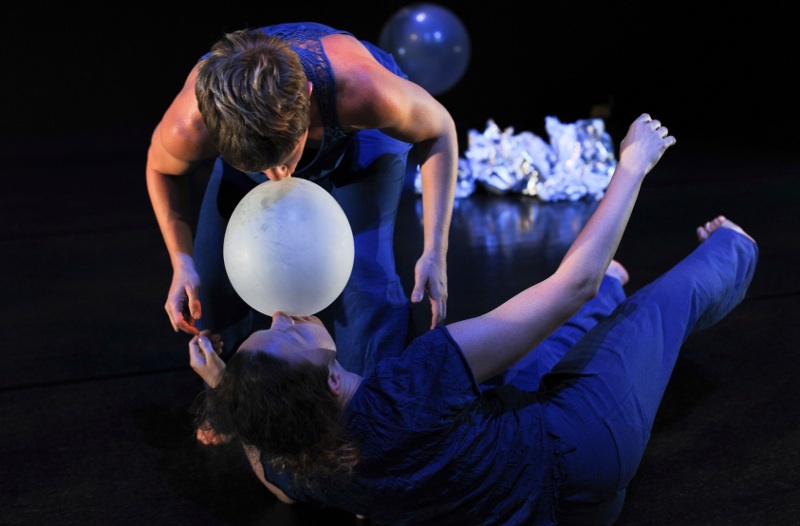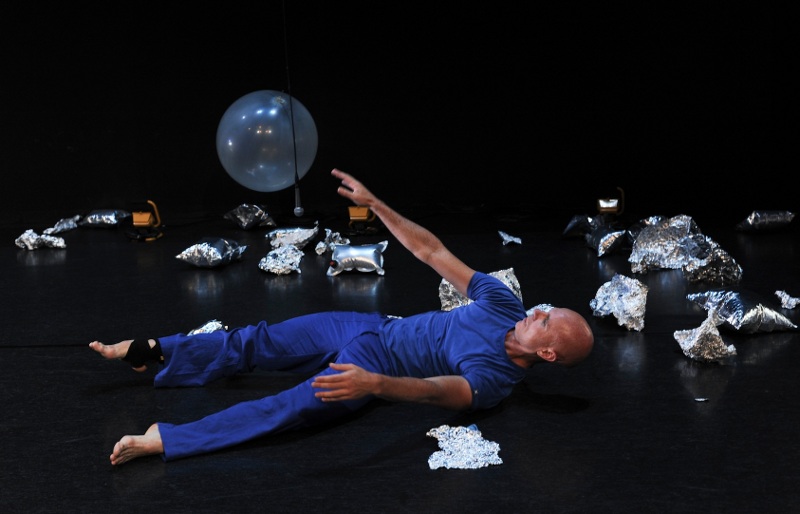Living Data
Science Art & Talks
Disclaimers, Copyrights and Citations
Conversations/Index 2010 2011 2012 2013 2014 2015 2016 2017 2018 2019 2020 2021 2022 2023 2024
The experiential process of observation and reflection is key to art and science
and is an essential component in understanding interdependence
of all species and ecosystems, terrestrial and aquatic.
Paul Fletcher Animator
Science Art & Talks
Living Data Program for the 2013 Ultimo Science Festival, Sydney, September 12-21.
Prime Orderly Dance (projection) by Dean Walsh
The marine world is mostly Earth and our senses mostly drive our actions. A movement scoring system is developed as a communication tool for collaborating artists whose shared concern is the changing climate of inner spaces.
Dean Walsh explains his art to Lisa Roberts and Malou Zuidema, Sydney, 2013

Dean Walsh collaborators in dance performance Prime Orderly, 2013

Dean Walsh in dance performance Prime Orderly, 2013
My main interest is to reach and inspire the wider public into better knowledge of our vast blue inner space.
Blue is the new green: I am a passionate SCUBA diver. Over the last six years this practice (I refuse to call it a sport because I find it more environmentally tuned in than sporty), has increasingly and profoundly informed my choreographic interests and overall dance practice and research. Prime-Orderly is the result of hundreds of hours of experimenting with, in-studio and in situ, physical disciplines and techniques that reflect my studies into marine species physiology and behaviour, ecology and conservation.
I am a Sydney-based dance practitioner: dancer, director, choreographer, teacher and workshop facilitator. I have devised more than thirty-five productions toured many of these nationally and internationally through touring agencies and with state and/or federal arts funds.
My earlier works were acclaimed for their visceral and astute psychological treatment of difficult socio-political subject matter such as: repositioning/questioning masculine stereotypes, familial and social homophobia, domestic violence and how macrocosmic versions of this war infects generations that follow. These themes had very personal immediacy for me but I was always philosophically and choreographically rigorous. I wanted to insure the works maintained thematic integrity and a wider resonance outside my own experiences.
In 2005, on my return from three years in Europe, I reached a point where my interests in natural environments, especially marine, began to override these terrestrial, urban-centric themes.
I have just completed a two-year Australia Council for the Arts Fellowship. The primary research focus in this period was on developing a movement scoring system - much like a user manual - I now call Prime-Orderly. This acts as a referencing tool during the making of new works that reflect on diving experiences and other marine themes. Its also a clearer communication tool between my collaborators, including my collaborations with other advanced SCUBA divers and my interest to develop relationships with environmental scientists as advisors.
Notes for exhibition designers:
The video Fathom may be projected through Biomesh in close proximity to animations by Lisa Roberts: Oceanic Living Data, Euphausia superba (Antarctic krill) and Life! Death. All these works use dance to relate to the ocean depths.












